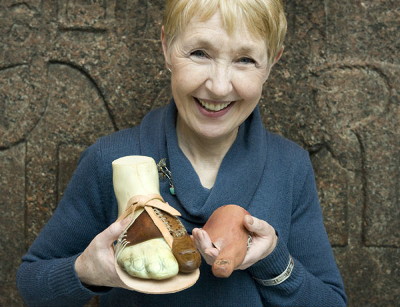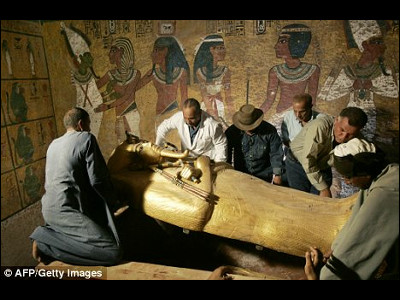The oldest prosthesis in the world the ancient Egyptian mummy was wearing

Two 'prosthetic legs' in the shape of a toe of a human foot excavated with a mummy in Egypt. Experiments conducted in the UK demonstrated that these prosthetic legs were not only supplementing the appearance but also a practical prosthetic leg that actually helps walking, the world's oldestProsthesisIt has become clear that it is.
It was the oldest prosthesis in the world so far Italy ·CapaRoman prosthetic foot found in "Roman Capua Leg(Around 300 BC), but this Egyptian prosthesis is hundreds of years older than that, it seems to be said to be a discovery that supports the advanced nature of ancient Egyptian medicine.
Details are as below.Mummies' false toes helped ancient Egyptians walk (The University of Manchester)
University of ManchesterEgyptian scholar Jacky Finch cooperated with the two subjects who lost the thumb of the right foot and conducted gait analysis using a replica of two "prosthesis" of ancient Egypt at the rehabilitation medical center of Salford University did. Detail isLancetIt is published in the magazine(PDF, 335KB).
This prosthetic leg in the form of a part of the thumb and leg of the right foot was made by the British investigators in 1881ThebesIt was unearthed in Egypt at that timeBritish MuseumIt was called "Greville Chester Prostheses" by Pastor Greville Chester who was engaged in collecting collections, and it is currently exhibited at the British Museum. "CartonnageLinen (hemp) was stuck with glue, covered with gypsumPapierIt seems that it is made by such a method. It was identified as being before 600 BC by a survey conducted from 1989 to 1992.

This prosthetic leg combining two pieces of wooden parts and leather parts with a string is the one of Cairo'sEgyptian Archeology MuseumWarehouse. It was discovered again in the cemetery group of the Thebe in 2000 and was buried with a woman's mummy named Tabaketenmut on his feet. Tabaketenmut living in 950 BC - 710 BC knows that it was the daughter of a priest, and he is suffering from diabetesIschemiaSexualgangreneIt seems that you might think that you lost a part of the toe of your right foot by me. He said that he was being buried with the cloth in front of it being wrapped like a bandage from the top of the prosthetic leg and fixed.

"There are several essential requirements for a practical" prosthesis "device: it is made of a material that withstands the load and is not broken during use, it is somewhat natural that is easy to accept for the user and surrounding people Being equipped with an appearance, it is necessary to be easy to attach and detach to keep the connection clean, and most importantly it will help walking, "Dr. Finch says. "The thumb of the foot is supposed to support 40% of your weight and plays an important role in advancing, but many of the people who lost their thumbs can adapt well to the gait without the thumb. To accurately evaluate, it was necessary to set up a network of cameras and pressure gauges on walking course and perform gait analysis. "
Dr. Finch who holds a faithful replica of Cairo's prosthetic limb (right hand) and the British Museum's Greville Chester prosthetic foot (left hand).

In the experiment, two subjects wore two prosthetic legs, walking together with a replica of ancient Egyptian sandals. Both of the prosthetic limbs are not at the level that "the difference with real legs is not understood", but one of the subjects seems to be able to walk very naturally with both prosthetic feet. Although neither prosthetic foot showed a significant pressure increase on the sole of the feet, both of the subjects reported that they reported that Cairo's prosthetic foot was especially comfortable.
Greville Chester Prosthetic feet have evidence of wear and tear, and some prosthetic features of Cairo's prosthetic limbs such as chamfered front end and flattened bottom are seen, so these prosthetic feet Dr. Finch seems to be thinking that it is more likely that the buried person had been worn by himself before he was living rather than being worn for religious or ritual reasons during the burial. is. However, I did not know whether it was actually a device with the function of assisting walking until I made a replica and experimented.
"This discovery strongly suggests that both prosthetic limbs could be called prostheses that can function in place of the lost fingers.The medicine in this field began at the feet of the Egyptians, Dr. Finch says.
Related Posts:
in Note, Posted by darkhorse_log







